So how will you know which hashtags you should use on your next Twitter post? Enter: Hashtagify
Hashtagify helps you find the trending hashtags in your niche, which will hopefully translate to more clicks on your tweets 🙂 This post is a very basic Hashtagify 101 guide. I aim at showing you the absolute basics of using this tool, so you can start playing around with it and experience its power first-handed.
Ready? Let’s start 🙂
1. Open Hashtagify & Search For Your First Keyword
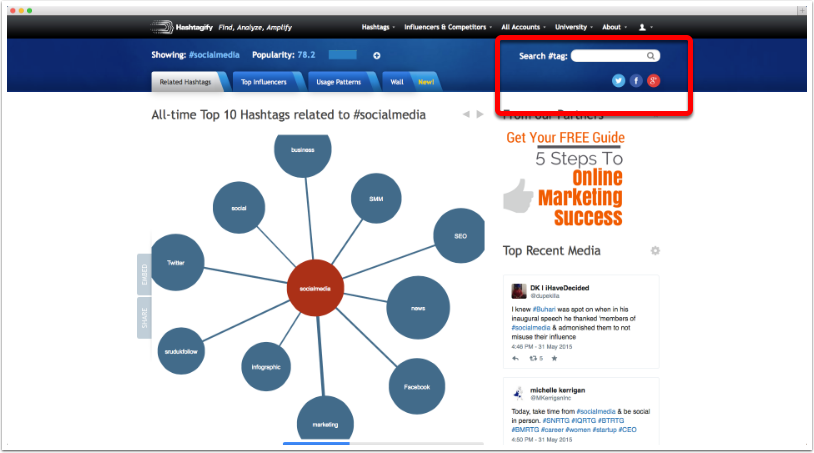
For example, I entered "podcasting" as my search term:
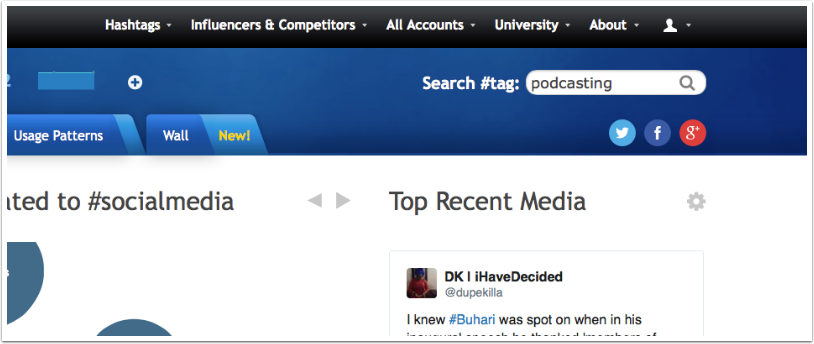
2. Hashtagify Will Present The Popularity Of Your Search Term
Within a second or two, Hashtagify will update and present the popularity of your keyword, on a scale from 1-100.
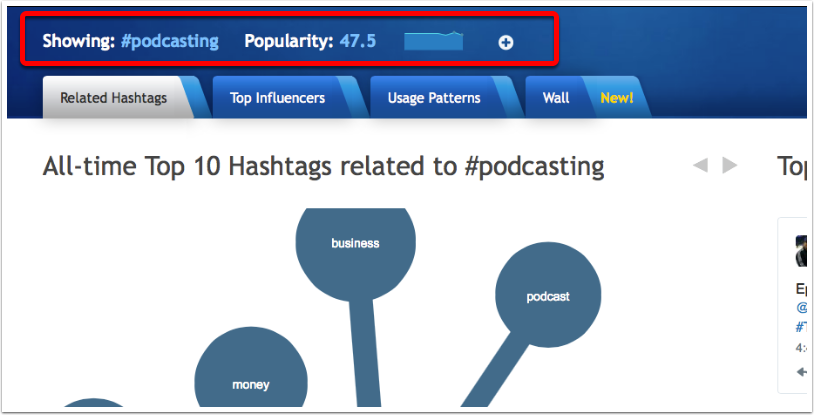
3. Dig Deeper
While seeing the popularity of your initial keyword is nice… In and of its own it doesn’t really tell you much.
I mean, if the popularity is very low or very high, then that’s very good info. But if it’s not here and not there, what you really need to know is how it compared to other hashtags you could use for the same niche.
This is where the hashtags graph comes into play. It allows you to see three crucial pieces of information:
- What popular hashtags are related to your keyword (these are the circles in the graph surrounding your hashtag in red)
- How much more (or less) popular are the other hashtags compared to your seed keyword (the bigger the circle, the more popular that hashtag is)
- How strongly related is that hashtag to your original keyword (the thicker the line connecting the two circles, the higher affinity between them)
For example, in the graph below we can see that while #business (1) is much more poplar than #podcasting (2), it still has a rather high correlation to the #podcasting hashtag (3 – thick line). Simply put, it means these two are often used together. Since you almost always want to use more than one hashtag, it seems like #business (if relevant) could be a great companion for #podcasting
Also interesting is that #podcast (4) has higher popularity than #podcasting (2), so if that is your focus, you may want to focus on that keyword instead. Or may want to use #podcast #business together!
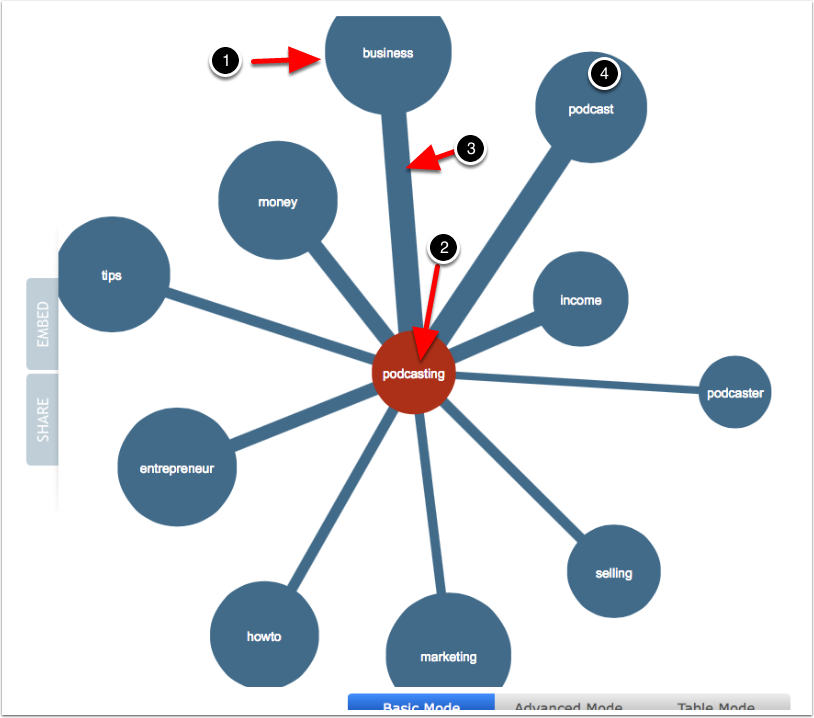
4. Hover for more info about related hashtag
You can hover over a related hashtag to see more information about it.
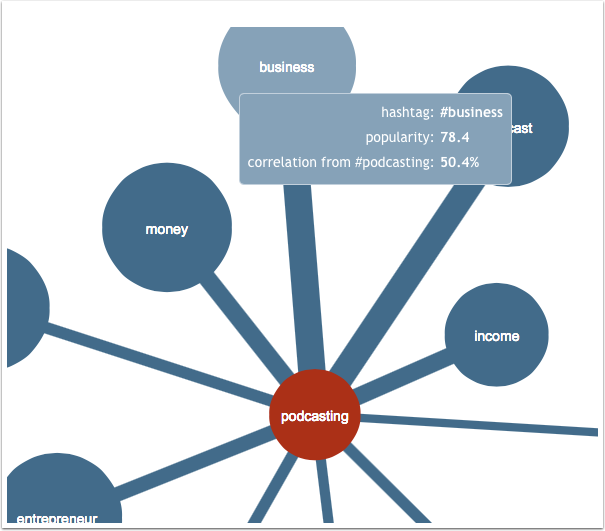
If you click on a related hashtag, Hashtagify will run a hashtag search using that keyword as it’s new base keyword.
In this example, by clicking on the related business keyword, we now see a new search showing hashtags related to business.
You can carry on digging deeper to find more related (and unrelated…) hashtags, until you get a good sense of which hashtags are popular, and which hashtags work well together.
One key thing to remember is that you should always aim for staying relevant. Hitting a hugely popular hashtag with unrelated content won’t do you any good. But providing something of value to a highly relevant hashtag, even if not as popular – can get you in front of some highly interested customers 🙂
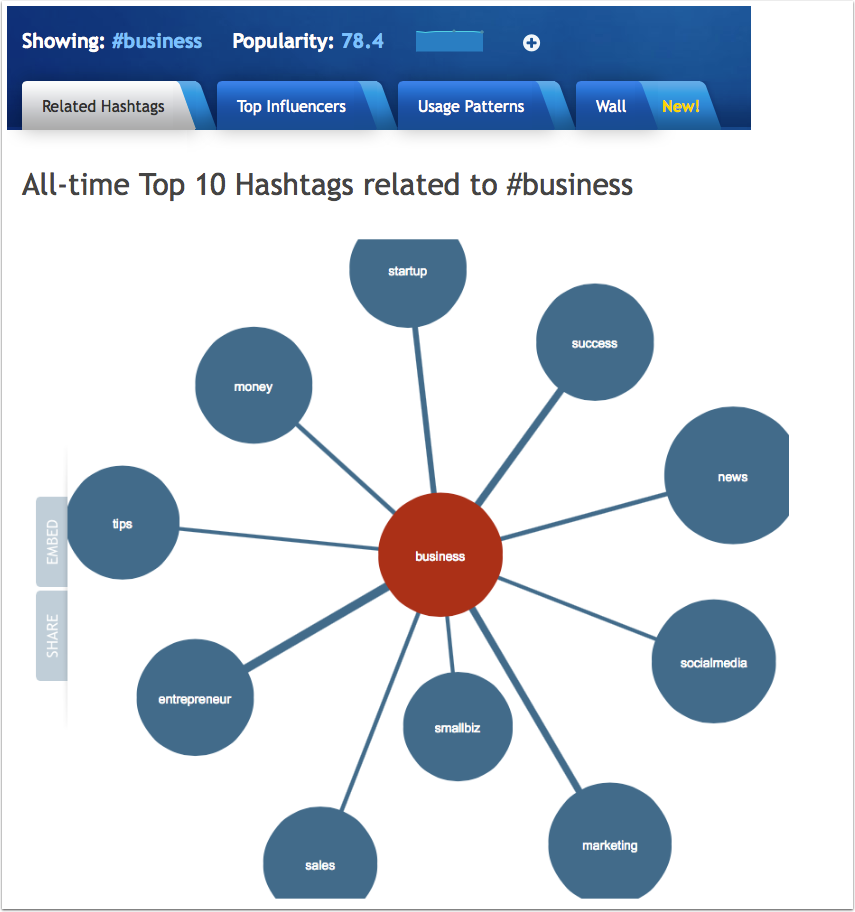
2 thoughts on “A Quick Guide To Finding Which Twitter Hashtags You Should Be Using With Hashtagify”
Comments are closed.